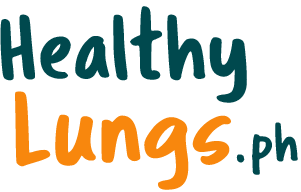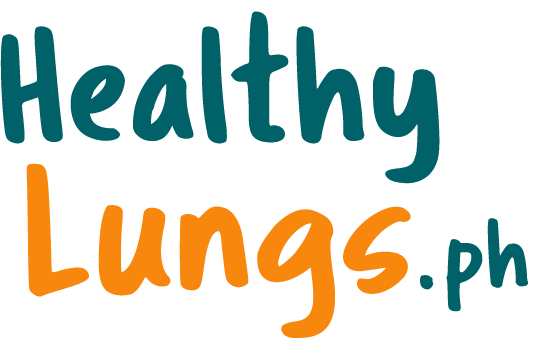Itwas a sweltering July day. Neri Murias, 67, gingerly climbed over the gate blocking the doorway of the one-room home he shared with his wife, two children, and three grandchildren, trying not to let the dogs out. Roosters crowed loudly and children chased each other along the narrow path as Neri wove his way through the densely populated neighborhood to the main road, dodging puddles from the previous night’s heavy rain.
At the main road, Neri lifted his frail body into the driver’s seat of his jeepney, an open-air jeep that serves as a primary form of public transportation in the Philippines. He put his keys in the ignition and the engine roared to life, drowning out the sound of his cough.
Neri poses in the house he shares with his wife, two children, and three grandchildren. / Christina Butler, USAID
As Neri plied his regular route along the congested streets of Manila, stopping intermittently to let passengers on and off, his cough intensified. Over the next month, it only got worse.
“I experienced these coughing fits when I was driving,” remembered Neri. “They wouldn’t stop. Sometimes, I’d see blood.”
His body got weaker. Neri lost his appetite and began losing weight. He struggled to breathe. Concerned he might have COVID-19, Neri visited a USAID-supported health clinic to get tested.
“I really wasn’t feeling well,” said Neri. “I decided to stop driving and get myself checked.”
Neri visited the Delpan Quarantine Facility, a pilot site for USAID’s joint tuberculosis (TB) and COVID-19 screening and testing program. This program allows patients to get tested for TB and COVID-19 simultaneously, helping them receive accurate diagnosis to get the treatment they need.
Dr. Agnes Paderanga speaks with Neri about his TB treatment regimen. / Christina Butler, USAID
During the COVID-19 pandemic, TB prevention and control efforts in the Philippines dropped dramatically. Many of the country’s health workers were redirected to COVID-19 response, and fewer Filipinos visited health facilities unless they had an urgent health problem. The joint screening and testing program is USAID’s latest effort to actively find TB cases in the Philippines.
The Philippines has the third-highest TB prevalence rate in the world, with 1 million Filipinos having active TB. Although it is a highly curable disease, it is the number one killer among all infectious diseases in the Philippines. In 2020, 31,000 Filipinos lost their lives to TB. In that same year, nearly 10,000 died of COVID-19 among the nearly half-million confirmed cases.
“During the pandemic, people tend to think that if they have any sort of cough, it must be COVID,” said Dr. Agnes Paderanga, physician-in-charge at San Nicolas Health Center.
“But coughing is also a symptom of TB. For TB patients, however, coughing lasts longer, and they experience other symptoms like unexplained weight loss, loss of appetite, and night sweats.”
Although Neri originally only went in for a COVID-19 test, healthcare workers recognized that Neri’s symptoms could be TB and suggested he also submit a phlegm sample. Neri tested negative for COVID-19, but positive for TB.
“Everything changed when I received this diagnosis,” Neri remembered. “It was such a difficult time for me.”
Neri was referred to the nearby San Nicolas Health Center for treatment. USAID-trained healthcare workers assured him that once on proper medication, he would become less infectious after only a couple of weeks of treatment. After completing his full six-month regimen, he would be TB-free.
Every week, Neri’s son went to San Nicolas to pick up medication for his father. Neri diligently took his medication and, over time, started to show improvement.
“When I first took my medicines at night, my cough would be gone the next day. Because I consistently took my meds every day, my cough dissipated,” he said.
Amid the COVID-19 pandemic, USAID supported several initiatives to ensure TB services remain available to Filipinos. In addition to piloting the joint screening for TB and COVID, USAID has also supported the private sector to make TB tests more affordable and partnered with local leaders to generate close to $750,000 (42 million pesos) to fight TB.
USAID also equipped the Department of Health and local government partners with $2.3 million (130 million pesos) worth of innovative tools for TB detection, diagnosis, treatment, and prevention. As a result of these interventions, more than 312,000 people received life-saving TB treatment in 2021 — including Neri.
These numbers are still below the national target, but each number represents another chance at life. For Neri, TB treatment gave him another chance to hug his children and see his wife smile.
It is this mindset that keeps healthcare workers like Dr. Paderanga motivated despite the challenges of the pandemic.
“I always think of each patient as my son, as my daughter, as a friend, as a family member,” said Dr. Paderanga.
“When you love someone, you do everything you can to save them. No holds barred. We, as health practitioners, must see patients as people, and not as their disease.”
Neri’s daughter meets him on the steps of San Nicolas and hugs him tightly. Thanks to USAID, the local government, and healthcare heroes like Dr. Paderanga, her father has fully recovered.
“I have immense gratitude for those who’ve helped me get tested and treated,” said Neri. “Whatever health problem you’re experiencing, you should get yourself checked.”
Link to the original article here: Neri’s Journey. USAID supports innovative methods to… | by USAID | U.S. Agency for International Development | Aug, 2022 | Medium



